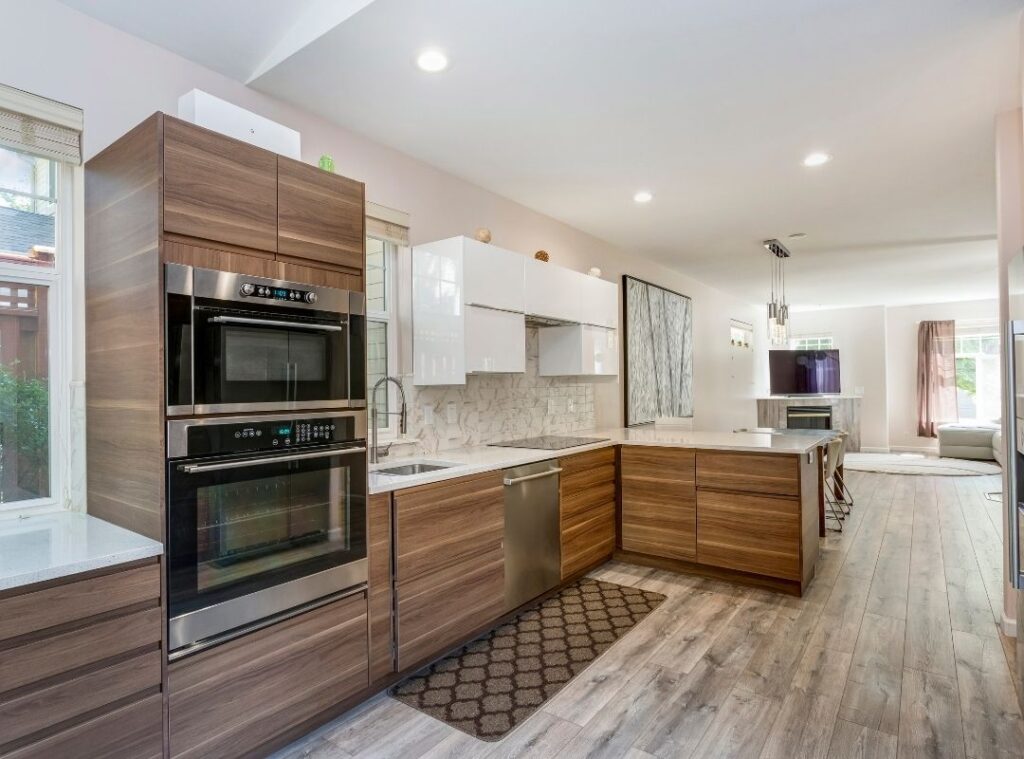Historic Kitchen Restoration Insights
The allure of historic kitchens lies not just in their quaint aesthetics but in the stories they tell about the generations that have gathered in their embrace. These spaces offer a tangible connection to the past, reflecting the domestic lives of those who came before us. However, restoring a historic kitchen requires a delicate balance between maintaining its original character and updating it for modern life. This blog post aims to guide enthusiasts through the intricate journey of historic kitchen restoration, providing valuable insights and practical advice to ensure the heart of your historic home beats on for generations to come.
Understanding the Value of Historic Kitchens
Historic kitchens are profound snapshots of a home’s history, often hidden in the details of construction, layout, and design that were influenced by the cultural and societal norms of their times. These spaces were designed with functionality that catered to the era’s lifestyle, perhaps even reflecting the social hierarchies of households with servants or the communal nature of family-oriented homes. Preserving these kitchens helps maintain a home’s historic integrity, offering future generations a glimpse into life in the past.
Moreover, historic kitchens are embodiments of craftsmanship and material history that modern designs often overlook. From handmade tiles to solid wood cabinets, the quality and style of materials tell stories of the past’s workmanship and aesthetics. The challenge of preserving these details lies in embracing these elements as irreplaceable cultural artifacts, meriting conservation for their historical significance, and aesthetic value.

Pre-Restoration Considerations
Before diving into the restoration process, significant preliminary research is crucial to understand the specific historical context of your kitchen. This phase should involve studying architectural styles, design elements, and materials prevalent during the kitchen’s original era. Understanding the social context, such as whether the kitchen was used by servants or was a gathering place for family meals, can also guide restoration decisions. This foundational knowledge will help ensure the restored space maintains historical accuracy and significance.
Another critical aspect before beginning restoration is being aware of any legal and regulatory considerations that apply to historic properties. Many areas have strict guidelines and permit requirements for renovations involving historic buildings to preserve their cultural heritage. Additionally, setting realistic goals, a well-planned budget, and thorough documentation, including photographs and any original plans, are essential preparatory steps. These help in maintaining a clear direction and serve as a reference throughout the project.
Core Elements of Historic Kitchen Restoration
The restoration journey involves numerous detailed decisions, starting with the kitchen’s layout and design. It’s crucial to respect the original floor plan as altering it can compromise the kitchen’s historical integrity. However, modern needs often call for contemporary conveniences. The secret here lies in integrating modern functionality seamlessly into the old structure, such as hiding modern appliances behind period-appropriate cabinetry or using technology that doesn’t disturb the original style.
In the realm of appliances and technology, the goal should be a balance between maintaining an authentic look and enjoying contemporary convenience. This might involve sourcing genuine antique appliances that have been restored to working order or high-quality replicas that mimic the originals’ style. Likewise, materials and textures used in the restoration require careful consideration. Utilizing authentic materials, perhaps sourced from salvage yards or specialists, can contribute significantly to the historic kitchen’s authenticity, preserving the tactile connection to the past.
The Restoration Process
Embarking on the restoration itself is a step-by-step journey that begins with an inclusive plan and involves detailed execution. Central to this process is choosing the right team, including skilled craftsmen, restoration experts, and potentially historians, all of whom will respect and understand your vision for authenticity. Their expertise can help navigate the project’s complexities, ensuring each detail aligns with the historical context, from the structural elements to the finishing touches.
The process is rarely straightforward, with potential challenges ranging from sourcing the right materials to installing period-accurate fixtures. Patience here is key, as is a willingness to troubleshoot unexpected issues. For instance, modern safety codes might require creative solutions to integrate unobtrusively into the historic aesthetic. Here, expert insights can prove invaluable, providing innovative solutions that adhere to safety standards while honoring the kitchen’s historical essence.
Case Studies
Examining successful historic kitchen restorations can provide both inspiration and practical guidance. These case studies often reveal insights into the decision-making process, highlighting how others have navigated challenges like sourcing authentic materials or adhering to historic preservation guidelines. Additionally, interviews with homeowners and experts offer firsthand perspectives that can prepare you for the journey, providing real-world examples of how to balance authenticity with modern needs.
Accompanying visuals, such as before-and-after photos or video walkthroughs, can be incredibly enlightening, showcasing the transformative power of careful restoration. These case studies can also serve as a testament to the collaborative effort required in such endeavors, illustrating the roles of various experts, the impact of thorough research, and the nuanced care infused into every decision.

Maintenance and Preservation
Once your historic kitchen has been lovingly restored, attention must shift to its ongoing care. The maintenance of such a space involves unique challenges, ensuring the longevity of both the materials and appliances. This upkeep extends the life of the restoration, preserving the kitchen’s historical charm and operational practicality. It’s important to use appropriate cleaning methods for antique materials and to be vigilant for issues like water damage that could threaten the integrity of the space.
Moreover, a commitment to preservation is a commitment to education. Continually learning about the best practices in historical preservation will help you make informed decisions that protect your investment in your home’s history. This might involve staying updated on preservation techniques, joining local or online communities of fellow historic homeowners, or even engaging with historical societies.
Restoring a historic kitchen is no small feat. It is a labor of love, patience, and dedication, demanding a respect for history and a commitment to craft. However, the rewards are profound, from the aesthetic pleasure of a beautifully authentic space to the knowledge that you’ve contributed to the preservation of cultural heritage. With careful planning, expert help, and a commitment to historical integrity, your kitchen restoration project can honor the past while creating a space to be enjoyed in the present.
If this journey seems daunting, remember that you need not walk it alone. The expertise of seasoned professionals can be invaluable, providing guidance, resources, and even hands-on assistance with your project. For those ready to take the next step in their historic kitchen restoration, don’t hesitate to reach out to 7-Day Kitchen. Their team understands the intricacies of such endeavors, ensuring your historic kitchen not only recaptures the past but is also equipped for many more years of future history-making.





